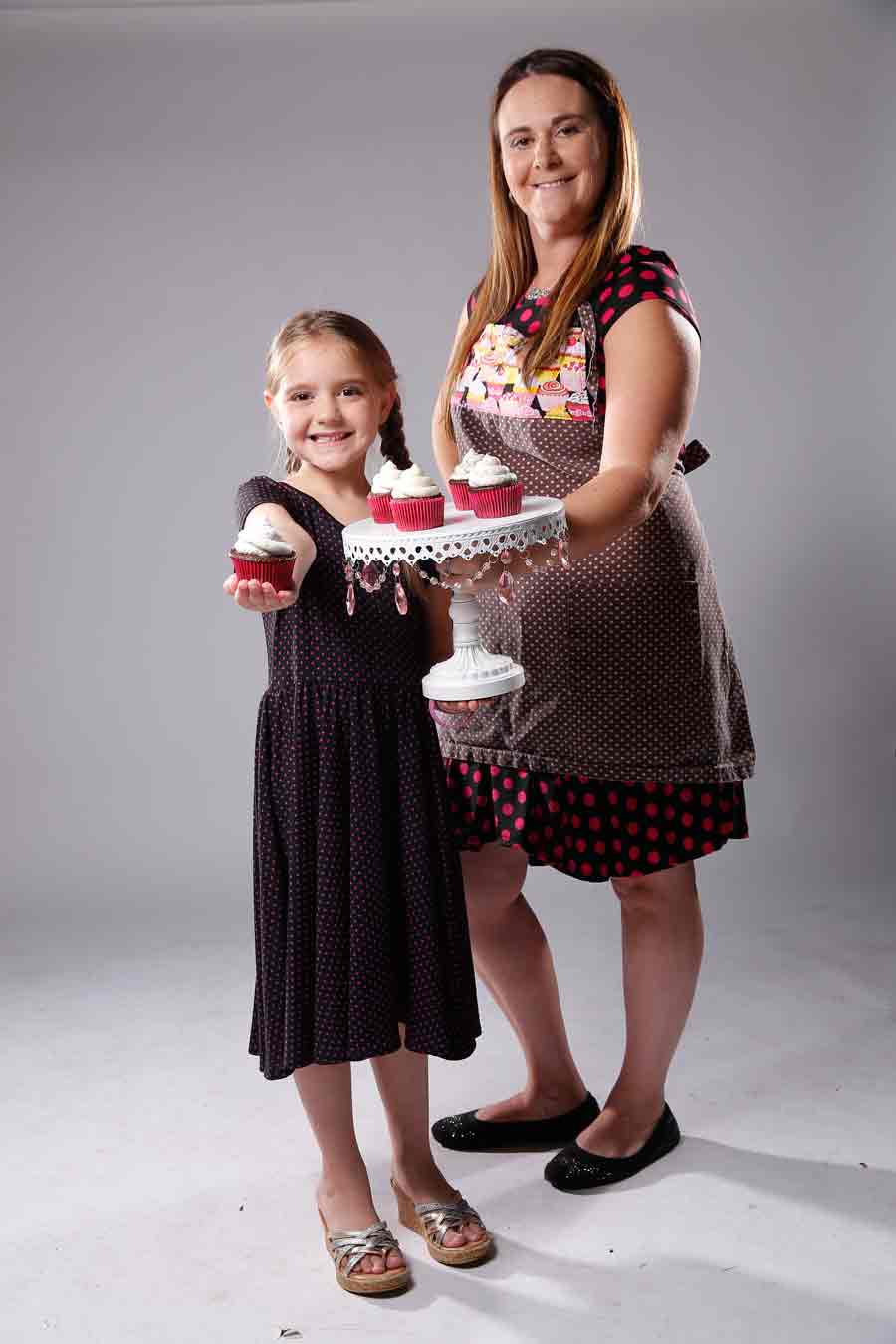Sticking a fork in diabetes and celiac disease
PHOTOS: FRED LOPEZ
Very little slows down lively Ava Barnes, including diabetes and Celiac disease.
As a Type 1 diabetic, Ave Barnes must keep her blood-sugar level within a safe range by constantly calculating what she’s eating, determining how much insulin the pump she wears is giving her, and pricking her finger up to 12 times a day to make sure her blood-sugar levels are not dangerously low or high. An abnormal reading means she must report to the school nurse.
This is not the only battle for Ava, a first-grader at The Villages Elementary of Lady Lake. Three months after being diagnosed with diabetes at age 4, Ava learned she also has Celiac disease, an autoimmune disorder that means she cannot tolerate gluten because it damages the inner lining of her small intestine. She must avoid bread, pasta, cookies, crackers, and cake at all costs or risk becoming hospitalized. When her classmates and friends enjoy these snacks, Ava is the odd girl out.
“There are times Ava says she wishes she didn’t have to deal with these diseases, especially when she’s feeling sick or if we’re at a birthday party and she cannot have cake like the other children,” says her mother, Kari Barnes, of Lady Lake. However, those gloomy moments are few and far between for this brown-eyed girl with light brown hair. Spend a little time with Ava and you’ll quickly realize she’s a bubbly ball of energy.
I want to be a teacher. That way I could tell everybody what to do, write on a chalkboard, and have my own big desk.”
In fact, during Healthy Living’s interview with Ava, she wanted to talk about everything except diabetes and Celiac disease. “Try to find me,” she says while ducking under a table in the company’s conference room. She completely disappears; the only trace of her is a soft giggle coming from underneath the table. Several minutes later, Ava asks me if I would like to watch her straddle on the floor. “Sure,” I tell her. She takes off her shoes, sits on the floor, and positions both legs straight out to the side.
Simply put, Ava does not allow the disease to hinder her enthusiasm for life. She participates in an after-school baton-twirling program, and this summer she will attend a local acting camp. “She has a big personality and likes to show off,” says Kari. “Unfortunately, she has only participated in one out of 10 parades with her baton group because she gets too excited before the event and that causes her blood-sugar level to rise.”
Ava also enjoys dressing up her American Girl doll, blowing up balloons and watching them drift skyward, and swimming at her grandmother’s house. “She is in her happy place when she’s doing those activities,” says Kari. The girl has even mapped out a possible career path. “I want to be a teacher. That way I could tell everybody what to do, write on a chalkboard, and have my own big desk.”

Ava with her Mother Kari Barnes


I went gluten free my self and have experienced health benefits. Modern wheat is not the same as it was 50 or more years ago and humans should not be eating it the science is there. Check out the work of William Davis MD. I don’t belive gluten free stuff is good either that throws blood sugar around more. Deficiency of chromium and vanadium contribute to diabetes. Our soils are depleted in trace minerals and damaged intestines from wheat drain us more. Steak or chicken with veg a bit of sweet potato is real food not cupcakes. I guess I’m more practical about what I eat you could say we acuired a taste for sweets. I can’t eat nothing like that it taste bad and would make me sick. Got used to real food again. Sugar is addictive as cocain.